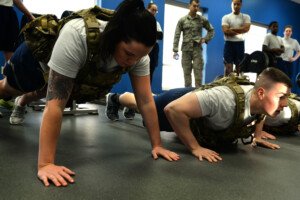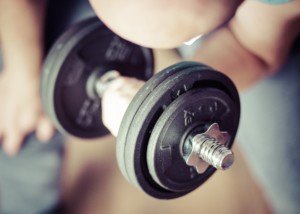
How is it that every time you do pushups, BOTH wrists end up hurting, yet you have no problem doing other pushing routines at the gym?
Though carpal tunnel syndrome can cause a pain in both wrists, it isn’t nearly the most likely cause, especially if the only time you feel the pain is during pushups.
Furthermore, carpal tunnel syndrome, if it causes pain during pushing exercises, will also likely be causing other symptoms such as numbness and tingling in the fingers and/or forearm tingling and pain – regardless of activity.
There is a much more likely cause of experiencing pain in both wrists upon doing pushups.
“The tendons and ligaments from the hand to the forearm are what gives the wrist its flexibility,” begins J. Mark Anderson, MD, DABFM, of Executive Medicine of Texas and who is board certified in family medicine.
“If pain is in both wrists during pushups, it’s often due to a lack of flexibility,” says Dr. Anderson.
“People tend to lose flexibility in their wrists unless they are doing regular exercises involving the wrist or stretching and flexibility exercises targeting the wrists.”
Flexibility Exercises
Pushups will improve flexibility in the wrists, since this exercise requires sustained wrist extension – unless you do variations such as pushups on your knuckles, fingertips or using handles or dumbbells.
But these variations, if done for every set, will deprive the joint from developing more flexibility. Do them for some sets but not all.
What you can also do, however, is simply pull (gently) your hand towards the topside of your forearm with the other hand and hold for 30 seconds, a few times every day. This will loosen things up.
A more comprehensive approach is to take up yoga. Many positions involve sustained wrist extension and will strengthen the joint.

“Pain in the wrist during exercise means the body is trying to warn the person of a problem,” says Dr. Anderson.
“Heeding the warning by changing position, modifying the exercise or stopping exercise altogether may keep the person from developing a more serious condition,” if the situation is more than just a benign case of stiff joints.
“If you experience pain in the wrist that is not immediately relieved when the exercise has stopped, it may require icing and/or bracing.
“If the pain is intense or lasts longer than 48 hours, seek the attention of a medical professional.”










































